Updated Feb. 13:
Michael Margolis has just introduced a new article, How to Brand Yourself as a Thought-Leader: Seven Must-Ask Questions, which is also the topic of a recorded telecall from Feb. 10 and a PDF of the article. Michael says of the topic: “Whether you’re an independent professional or part of a larger firm, the article will encourage you to think about your story and positioning in a fresh perspective.”
Will the Most Storied Video Resume Win the Internship?
I’ve been following (here and here) the efforts by the marketing agency Ink Foundry to choose a paid intern based on the videos candidates have submitted. I suggested that candidates tell stories in their videos.
The submission deadline for the videos has now passed, and Ink Foundry is inviting the public to vote on which of three finalists should get the internship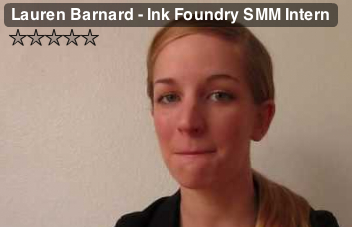 . (The agency intended to have 10 finalists but got fewer submissions than expected. “When you ask people to do something exceptional, like create a video resume, only the exceptional step up,” is the agency’s explanation.)
. (The agency intended to have 10 finalists but got fewer submissions than expected. “When you ask people to do something exceptional, like create a video resume, only the exceptional step up,” is the agency’s explanation.)
All three finalists — Rachel T, Lauren B and Tyler M — tell stories in their videos. All three have their strengths, and my critiques of them have little to do with their storytelling.
Tyler wins points for brevity; both of the other two videos go over the 3-minute limit, while Tyler’s is well under — but maybe that’s because Tyler doesn’t address all the elements Ink Foundry asks him to. Tyler, in my opinion, gives the most natural delivery, but that also means he sprinkles his speech with “likes” and “ums.” He also takes what I believe is a big risk by suggesting that he has engaged in underage drinking. If Ink Foundry were bothered by that admission, it would not have chosen Tyler as a finalist, but not every employer would be as tolerant. Tyler’s video had the weakest production values — dark lighting and an unclear picture. Tyler seems very likable.
Rachel‘s black-and-white video has great production values, but she lost me somewhere in the middle of her too-long video; at 3:44, it’s the longest of the three. Rachel focuses too much on what the internship can do for her instead of what she can contribute to Ink Foundry. She needs to smile more and project more enthusiasm. She does a good job of selling herself as a social-media junkie. She does more than the other two to encourage people to vote for her video (and at the time of this writing, she’s leading by 1 vote).
My favorite video, Lauren’s (embedded below) offers excellent production values. She’s the only one of the three to include footage beyond simply her talking head. She’s also the only one to use background music and special effects. Lauren’s video is the most story-rich, and she tells her stories well. I personally would hire her over the others in a heartbeat because she completed a previous internship with The Hoffman Agency, which focuses on storytelling. Of course, that emphasis on stories may not be as important to Ink Foundry as it is to me. Lauren does the best job of the three of explaining what she can do for Ink Foundry. My only critique of her is that her shirt is too low-cut.
You can vote here, and the deadline is midnight, Friday, Feb. 12.
User-Experience Storytelling Article Provides Superb Primer
 User-experience (UX) storytelling was one of the storytelling applications that was new to me in 2009. I interviewed Whitney Quesenbery (who is writing a book on the subject) and wrote about Cindy Chastain.
User-experience (UX) storytelling was one of the storytelling applications that was new to me in 2009. I interviewed Whitney Quesenbery (who is writing a book on the subject) and wrote about Cindy Chastain.
Now, along comes Francisco Inchauste, who has published a wonderfully written and illustrated blog entry that not only explains the basics of storytelling in UX but also serves as a basic primer for many other storytelling applications. Best of all, Inchauste’s blog entry is just Part 1, so we can look forward to one or more installments.
Although I don’t entirely agree with Inchauste’s assertion that the fragmentation of today’s information flow has diminished the personal touch and opportunity for personal connection, I heartily support his statement: “Using storytelling, however, we can pull these fragments together into a common thread.” He says “user experience professionals and designers are using storytelling to create compelling experiences that build human connections.”
Inchauste begins by noting that all stories follow the same mythic archetypes. Think Star Wars, whose special effects dressed up the Hero’s Journey. He borrows a grid from the Star Wars Origins site that shows common mythic elements in movies such as Star Wars and The Matrix. He asserts, “Great stories, though, don’t just happen randomly; they are designed.”
Donald Norman’s book 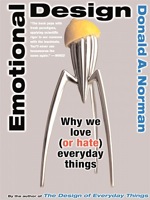 Emotional Design is Inchauste’s source for the three levels of How the Brain Processes an Experience — through visceral design, behavioral design, and reflective design — this last seemingly most relevant to storytelling in that “we associate products with our broader life experience and associate meaning and value to them.”
Emotional Design is Inchauste’s source for the three levels of How the Brain Processes an Experience — through visceral design, behavioral design, and reflective design — this last seemingly most relevant to storytelling in that “we associate products with our broader life experience and associate meaning and value to them.”
Having laid that foundation, Inchauste writes: “Knowing that emotion is so vital to how we think makes it more important to create not just a functional and usable experience, but to seek and make a meaningful connection,” which is his lead-in to the basics of storytelling for user experience:
At a basic level, storytelling and user experience have common elements — like planning, research, and content creation — that can be utilized for effectively developing an experience. Storytelling offers a way for the team to really understand what they are building and the audience that they are creating it for. Stories allow for the most complex of ideas to be effectively conveyed to a variety of people. This designed product/experience can then offer meaning and emotion for its users. … With storytelling, a diverse team creating a website or application can collectively link together the tangible elements and create something that is a meaningful experience and is more than just bits and bytes.
A point of controversy, at least for one commenter to the blog entry, is Inchauste’s explanation of how designers should define the users for whom they are designing experiences: “By building a fictional representation of the user that is based on real research and observation, we are able to empathize with them and really understand their needs. Using the created personas and then creating stories about them, we are able to cast a more meaningful vision of the project.” He presents a very detailed profile of such a fictional representation of the user. Reader Josh Walsh demurs on the fictional aspect:
I disagree. Personas should definitely not be fictional in any way. The names may be changed, but the motivations, experiences and disciplines of people should not be averaged into a fictional character. When measure how real people interact with your design, you should keep people as real as possible.
While I know little about user-experience design, Walsh’s view on this point makes more sense to me than does Inchauste’s.
The benefits of deploying storytelling in User-Experience Design, Inchauste says, are that storytelling:
- Puts a human face on dry data
- Can simplify complex ideas for a team
- More efficient team collaboration and purpose
- Insight into the key users
- Setting a project direction faster
- Better communication within large agencies/organizations
- Experience delivers meaning and value to users
Like many of the commenters to the blog post, I’m really looking forward to Part 2.
Reinvention Stories Sought for Book
The folks behind Lemonade, an inspirational film about 16 advertising professionals who lost their jobs and found their calling, now want to create Lemonade (The Book). The volume “will assemble a collection of essays from people telling stories of reinvention in their own words. Only this time, it won’t be limited to the advertising industry,” the site states.
From the site:
Imagine all the inspirational personal triumphs that arose after the auto
industry crash. Think of all the school teachers, engineers, and finance professionals who have found their life’s work thanks to being downsized. Those of us in advertising provide just one, very sheltered viewpoint of what’s possible in unemployment. If you lost your job but found your calling, we want to hear from you.
Please submit a 1-paragraph abstract (about 100 words) about yourself. At this stage, I want this to be more about the quality of your story and less about the quality of the writing. If your story is inspiring enough, we’ll get it written.
Story Luminaries Announce New Offerings
Yesterday’s mail brought news from three well-known names in applied storytelling: Thaler Pekar in partnership with Svend-Erik Engh and Michael Margolis.
And, wow, this year’s Washington, DC, storytelling weekend is starting even earlier — and in New York City! Kind of the opposite of previewing a show on the road before it opens on Broadway.
Thaler and Svend-Erik are offering two programs in NYC before traveling to DC to open this year’s Smithsonian Institution Conference on Organizational Storytelling:
- Motivate & Communicate through Story, Wednesday, April 14, 8:15 AM to 9:30 AM; limited to 25 participants. Fee is $75 — $55 if you register before March 1. Continental breakfast will be served.
- StorySharing™: The New Communication Paradigm, Wednesday, April 14, 1 PM to 6 PM, plus optional dinner; Limited to 6 participants. Fee is $775 — $675 if you register before March 1. Hearty snacks will be served, and the group will dine together afterwards (each at our own cost). The registration fee includes two weeks of pre- and another two weeks of post-program coaching.
Both programs will be held at Rockefeller Center in midtown Manhattan, 1230 6th Avenue at 49th Street. Register here.
Here’s Thaler’s pitch for the events:
This is a rare opportunity for leaders to re-discover and enhance their ability to harness the power of story to solve problems and achieve success. Participants will benefit from both my deep expertise in persuasive communication and organizational story elicitation and Svend-Erik’s mastery in crafting and performing stories. Svend-Erik is the author of Tell a Story: Be Heard, Be Understood, Get Action (Fokus). He has consulted with Microsoft Denmark, Maersk Container Industry, and Novo Nordisk, among other international companies. You can learn more about Svend-Erik Engh. See Thaler’s summary of How Story Helps smart leaders and their organizations and PhilanTopic essays Stories are a Vital Source of Knowledge and The Trouble with Values.
Motivate & Communicate through Story will enable leaders to:
- Communicate more effectively — more persuasively and efficiently, and with more satisfaction
- Inspire and sustain action from employees
- Find and craft stories to achieve specific goals and objectives.
As a result of participating in StorySharing: The New Communication Paradigm, each leader will significantly improve his or her ability to:
- Attract and retain more customers and donors
- Strengthen his or her institution’s — and personal — brand and competitive advantage
- Reduce misunderstandings and wasted time and money
- Improve the quality of relationships with customers, donors and staff.
Meanwhile, even though Michael Margolis’s Get Storied site is relatively new, he has already revamped it — to put much greater emphasis on content. Here’s what he says about his intent: “Say goodbye to sales-y consultant speak, and say hello to – Content, Content, Content. That’s the experience we all crave on the web isn’t it? We’re looking for a fresh voice and an honest perspective that we can relate to, or that provokes us in welcomed ways. That’s my intention with Get Storied. To give you regular installments of new ideas, practical tips, and relevant trends.”

He offers a sample list of content categories with a representative piece of content from each:
Oral History in the Digital Age
 What do you get when you cross oral history with digital storytelling?
What do you get when you cross oral history with digital storytelling?
The blog TC3 Idea Exchange explores the notion of using technology to present oral histories. I can’t find the name of the individual blogger, but the T3 Consortium “is a diversified LLC enterprise supporting key business-to-business and business-to-consumer services.”
The very comprehensive post touches on how to conduct and oral-history interview, presentation software and equipment that can be used to present the history, and how to search for more information.
It’s a terrific post for those seeking creative ways to tell stories of people and events.
100 Years Ago, Narrative Helped Save US Public Lands
I’m reading — via audiobook — a terrific book, The Big Burn: Teddy Roosevelt and the Fire that Saved America by Timothy Egan, about the biggest wildfire in US history, which in 1910 consumed 3 million acres in eastern Washington, Idaho, and Montana, destroying five towns and killing at least 85 people.
Narrative comes into play in the subtitle — the Fire that Saved America — in that, in the aftermath of the fire former president Teddy Roosevelt felt he must come up what author Egan calls a “master narrative” to garner popular support for the US Forest Service, the then-radical idea of conserving public lands, and ways of preventing and managing forest-fire threat.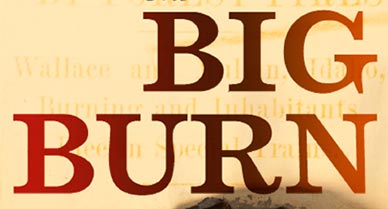
Roosevelt, assisted by his close friend Gifford Pinchot, who had been the first head of the Forest Service but was fired by Roosevelt’s successor William Howard Taft, built this master narrative on what had transpired during and after the fire. A faction of lawmakers and businesspeople (who felt the forests’ resources should be exploited for commercial interests) had opposed the Forest Service and ensured that its funding was stripped to the bare bones. Consequently, rangers who played key roles in containing the fire got no sick leave and no assistance with medical expenses. No compensation was offered to families of those firefighters who lost their lives. Roosevelt told the story of the heroism of the rangers who fought walls of fire. He and Pinchot personalized the story of the fire, Egan writes. Particularly in a speech in Osawatomie, KS, Roosevelt (with speechwriting by Pinchot), told of the classic plotline, the “conflict between the men who possess more than they have earned and the men who have earned more than they possess…” (Read the text of the speech).
Leading the competing narrative was US Senator Weldon Brinton Heyburn, who blamed the Forest Service rangers for the fire and then, perpetuating a long tradition that continues today in the likes of Pat Robertson, said the fire was “God’s will” and that the deity obviously intended to clearcut all the trees from the forests.
In an interview with Smithsonian magazine, Egan tells how the fire — or more precisely, the “master narrative” Roosevelt and Pinchot told about it — “saved America:”
It saved America in this sense: it saved the public-land legacy. Now, people think public lands are national parks, but they’re really a small part of it. The Forest Service is the primary landlord of the American West. We have nearly 200 million acres of national forest land. At the time of this fire, Roosevelt had left office and Congress was ready to kill the Forest Service. So the fire had the ironic effect of saving the Forest Service, therefore saving America’s public-land legacy.
The fire and the master narrative not only saved the Forest Service but shaped its mission and “helped cement an antifire ideology in the Forest Service,” says John Galvin, writing about the fire as part of a list of 10 Worst Disasters of the Last 101 Years in Popular Mechanics (!). Galvin continues: “Congress poured money into the effort … The service created its own army to fight fires, replete with ground troops to dig trenches and set backfires, elite smoke jumpers to parachute into remote areas and an air force of tankers, reconnaissance planes and helicopters.”
Not only does Egan describe how storytelling changed public sentiment, but he engrossingly weaves the many stories of the fire and characters involved with it. I heartily recommend the book.
Read more about the fire and see pictures.
And here’s Egan talking about the fire and the book:
Storying Your Way to a Fulfilling Relationship
The portion of the Finer Minds Web site that promotes Chris Cade’s free downloadable workbook, “Using the Power of Stories to Attract Your Ideal Relationship” notes that folks can “attract and experience their most loving and empowering relationship through the simple and fun art of storytelling.”
Cade’s workbook and the approach it represents were new discoveries for me, but his approach reminds me of that of Louise Hay (You Can Heal Your Life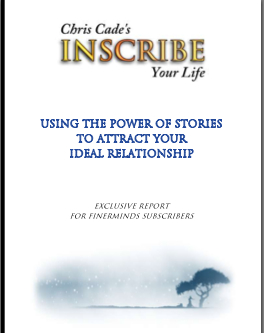 ), which helped me at a difficult moment of my life. Both focus on the notion that when people hurt us, it’s not really their fault because they’ve been hurt, too. As Hay puts it, “We are all victims of victims.” Both also provide exercises that involve visualization and repetition of affirmations.
), which helped me at a difficult moment of my life. Both focus on the notion that when people hurt us, it’s not really their fault because they’ve been hurt, too. As Hay puts it, “We are all victims of victims.” Both also provide exercises that involve visualization and repetition of affirmations.
Cade’s approach also reminds me of the “change the story, change your life” approach in that it involves composing future stories that enable you to visualize what the story would like like in your life.
Cade says that “after you finish [the] 2 short exercises in this downloadable workbook, you will:
- Discover who your perfect partner is and if you’re already in a relationship, whether or not you are in a healthy one.
- Pinpoint and break the limiting beliefs that may have held you back from experiencing the full spectrum of a beautiful and empowering relationship.
- Experience a creative visualization process that uses the core principles of the Law of Attraction, imagination, and storytelling to bring you one step closer to your ideal relationship.”
Cade hopes you’ll buy materials for his larger Inscribe Your Life program. The Web site for the program is one of those that reminds me of a text-heavy old-school direct-mail piece with bold, brash headlines in color and copy that seems to go on forever (it seems old-school but I still see these kinds of direct-mail pieces all the time). If you try to close the page, you get a couple of messages to the effect of “Are you sure?” I always have a hard time believing this marketing technique works, but given its prominence, I guess it must.
Does Cade’s storytelling approach work? Well, you can’t beat a free download to check it out and see what you think.
Do We Want Authenticity in Our Storyteller-in-Chief?
… and is our current Storyteller-in-Chief even telling stories?
Political and communications analysts have written recently about President Obama’s storytelling — or lack thereof — both in his State of the Union speech and in the first year of his presidency.
Some, like Jason Snyder, said that the State of the Union address was a case study in the art of communication for three reasons, one of which was that it included authentic stories (the others: consistency of message and proper positioning). Others, like Emily Bobrow, said of the speech, “We didn’t get a story …”
I don’t agree completely that we didn’t get a story. We may not have heard an overarching narrative, but we certainly heard a patchwork of small stories.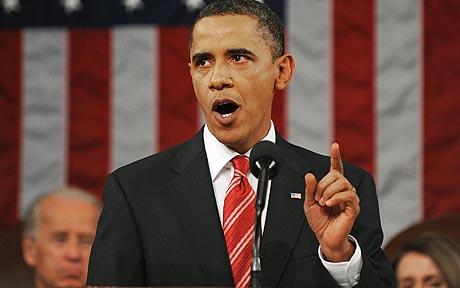
But the lack of that overarching narrative is what New Yorker writer Junot Diaz (whom Bobrow also cites) laments. Diaz wrote his piece not about the State of the Union but about the anniversary of Obama’s inauguration. Some excerpts:
All year I’ve been waiting for Obama to flex his narrative muscles, to tell the story of his presidency, of his Administration, to tell the story of where our country is going and why we should help deliver it there. … a story that no matter what our personal politics are will excite us enough to go out and reëlect the teller just so we can be there for the story’s end. But from where I sit our President has not even told a bad story; he, in my opinion, has told no story at all. … The President gave us a raft of information about why healthcare would be a swell idea; the Republicans gave us death panels. … I’ve yet to hear anything that excites that part of my brain which loves, which craves the symmetries the pleasures of well-told tale.
Diaz contrasts Obama’s unstoried first year, not only with tea-party and death-panel stories, but with newly elected Massachusetts Senator Scott Brown’s “story of an upstart outsider with energy and ideas, who was going to shake things up” and the story of himself and his background that Obama wove on the campaign trail.
So what would a presidential story that “excites that part of [our] brain[s] which love, which crave the symmetries the pleasures of well-told tale” look like? Diaz doesn’t give an example, but the one that springs immediately to mind for me is the future story JFK told that began “We will go to the moon before the decade is out.” I’m not sure that the State of the Union is the best platform for an inspiring story like that one, but I still would have liked a more cohesive narrative to tie together the policy points in the speech.
I also believe Obama did deliver an overarching narrative of a president who has made mistakes in his first year in office and learned a great deal. In that sense, he told a highly authentic personal story in the State of the Union.
I’ve read repeatedly that authenticity is key to effective storytelling, most recently in a blog post by Jo Golden: “No matter how you decide to tell your story, the most important quality will be authenticity. Authenticity, honesty, and straightforward ways of being promote trust.”
I know we want honesty and straightforward ways of being from our Storyteller-in-Chief. But I wonder about authenticity. Presidents rarely admit to mistakes; certainly Obama’s predecessor didn’t. My husband worried that the FOX News-type pundits would rip into Obama for telling his authentic story of imperfection. (I don’t know if that happened because I cannot bear to watch FOX News, but they pretty much rip into the president for everything.)
I’d love to get Paul Costello’s take on how the president is doing with his storytelling.
And what do you think?
How much authenticity do we want from our president? Are se so accustomed to spin that authenticity from our president makes us nervous?
It’s National Storytelling Week in England
This is the first year I learned of England’s National Storytelling Week (this year, Jan. 30 to Feb. 6), although the event is now in its 10th year. The material about the week at the Society for Storytelling site suggests the week mostly focuses on oral storytelling to and for young people , but the site also says this:
Storytelling stretches from its simplest application in the nursery right through to personal stories and bereavement aids in hospitals, strengthening communication in the business sphere, and as an aid to learning in education. In its sharing between teller and listener it gives and receives time, it empowers, it creates and feeds the imagination from one generation to the next.
On her site storyteller Gemma Hanna explains why National Storytelling Week occurs at this time of year:
This week was chosen because it is not too close to Christmas and coincides with Candlemas, which falls on the 2nd of February. Part of the rituals for this old church festival includes a blessing on the throat, a prime tool in the store of nearly all storytellers of every belief and culture.
I know of several storytelling days that are celebrated in the US and worldwide, but maybe the world needs a whole week dedicated to storytelling.
